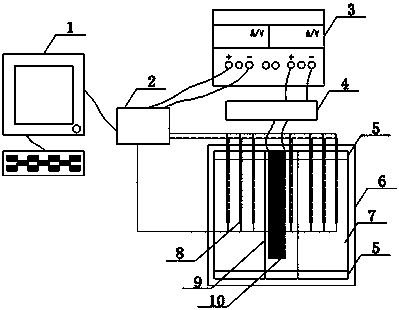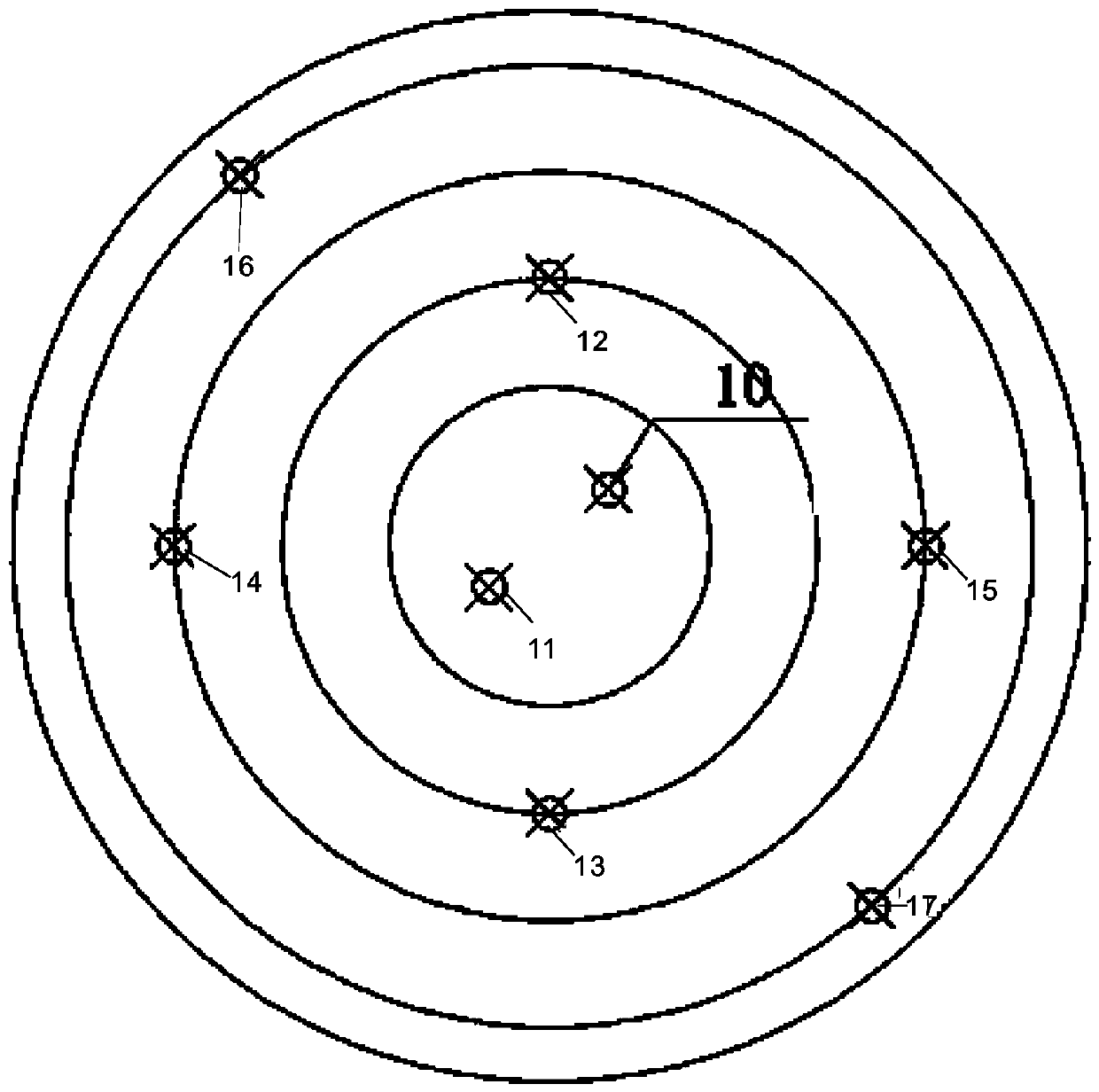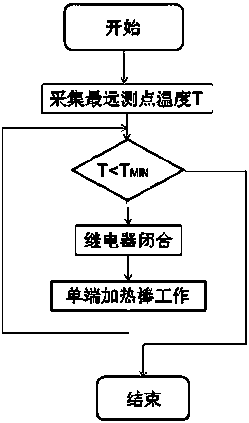A method for testing non-steady thermal conductivity and the testing device used
A technology of thermal conductivity and testing device, applied in the direction of thermal conductivity of materials, etc., can solve the problem of inability to accurately measure the non-constant thermal conductivity of materials, and achieve the effect of filling the gap in the industry
- Summary
- Abstract
- Description
- Claims
- Application Information
AI Technical Summary
Problems solved by technology
Method used
Image
Examples
Embodiment 1
[0064] A method for non-steady-state thermal conductivity test, the method comprises the following steps:
[0065] 1) Apply temperature disturbance to the sample to obtain non-steady-state heat conduction temperature data inside the material;
[0066] 2) Through the temperature data, the least square method is used to perform multivariate function fitting on the non-steady thermal conductivity;
[0067] 3) Based on the least square finite element method, according to the temperature value of each node, the non-steady state process of the thermal conductivity of the material is inversely calculated, and the non-steady state thermal conductivity is obtained.
[0068] The sample and multiple sensors are symmetrically arranged, apply temperature disturbance to the sample, and circulate heating within a certain temperature range to allow the temperature to spread evenly to the sample, and then collect temperature data at different radii at different times to obtain non-steady-state...
Embodiment 2
[0094] Such as figure 1 with figure 2 As shown, a test device for collecting sample temperature data in testing non-steady thermal conductivity by the above method,
[0095] It includes mold testing device, temperature control system and data acquisition system;
[0096] In the test mold device, a circular foam board 5 is arranged at the bottom of the test mold 6, and a steel pipe 9 is inserted in the center of the test mold 6;
[0097] In the temperature control system, the single-ended heating rod 10 connected to the relay 4 is arranged in the center of the steel pipe 9, and the relay 4 is connected to the power supply 3;
[0098] The data acquisition system includes a plurality of temperature sensor groups 8. Among the plurality of temperature sensor groups 8, the first temperature sensor 11 is arranged inside the steel pipe 9, and the second temperature sensor 12 and the third temperature sensor 13 are arranged symmetrically. The temperature sensor group composed of fo...
Embodiment 3
[0109] Such as image 3 As shown, a method for automatically applying the temperature disturbance to the sample by using the above-mentioned test device, the method is:
[0110] The initial state of the relay 4 is disconnected when the test is set to start, and the temperature collection module 2 collects the temperature of the sixth temperature sensor 16 or the seventh temperature sensor 17 farthest away from the center of the sample 7 as T, when TWhen the highest temperature is set, the relay 4 is disconnected, the channel of the single-ended heating rod 10 and the power supply 3 is cut off, and the heating is stopped, which is used as a heating cycle to realize the automatic application of temperature disturbance to the sample and perform multiple heating Cycling constitutes a non-steady heat conduction process.
[0111] In order to control the time of one cycle and improve the discrimination of the temperature value of each temperature measuring point, the minimum temperat...
PUM
 Login to View More
Login to View More Abstract
Description
Claims
Application Information
 Login to View More
Login to View More - R&D
- Intellectual Property
- Life Sciences
- Materials
- Tech Scout
- Unparalleled Data Quality
- Higher Quality Content
- 60% Fewer Hallucinations
Browse by: Latest US Patents, China's latest patents, Technical Efficacy Thesaurus, Application Domain, Technology Topic, Popular Technical Reports.
© 2025 PatSnap. All rights reserved.Legal|Privacy policy|Modern Slavery Act Transparency Statement|Sitemap|About US| Contact US: help@patsnap.com



